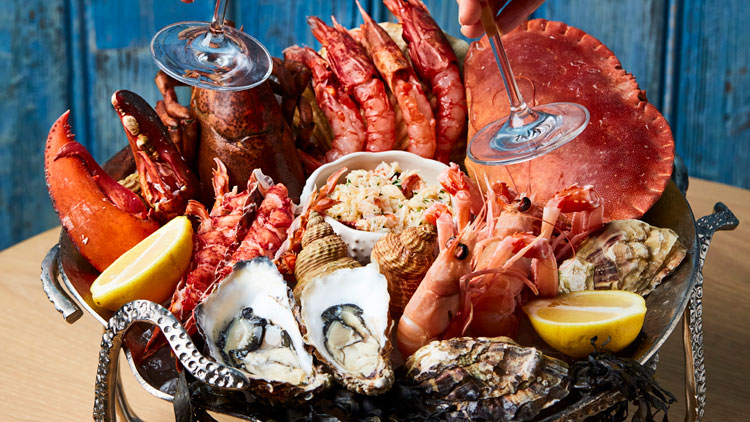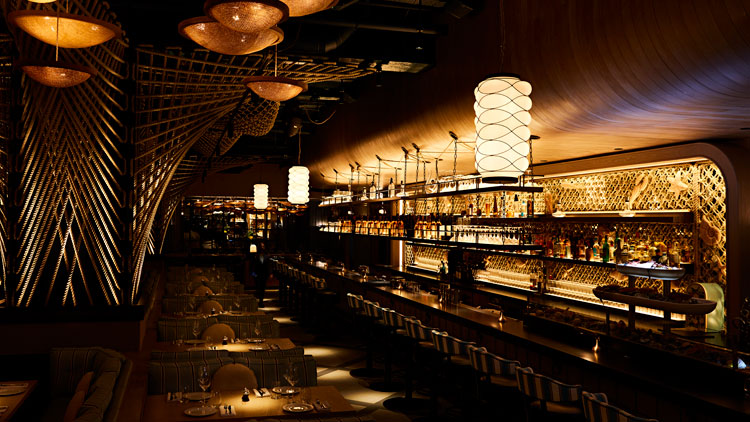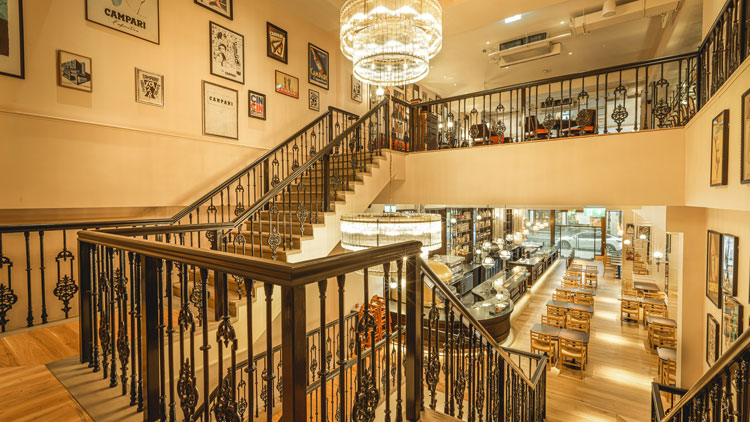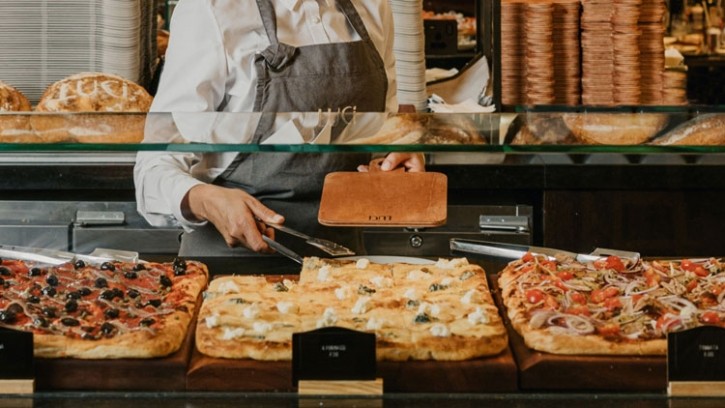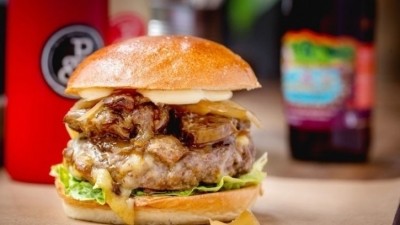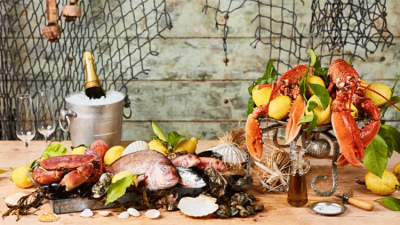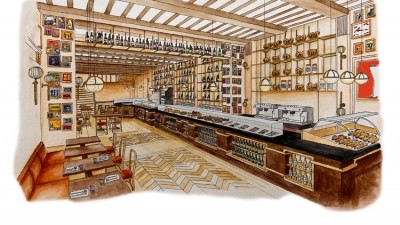Aqua man: how David Yeo built an international restaurant group
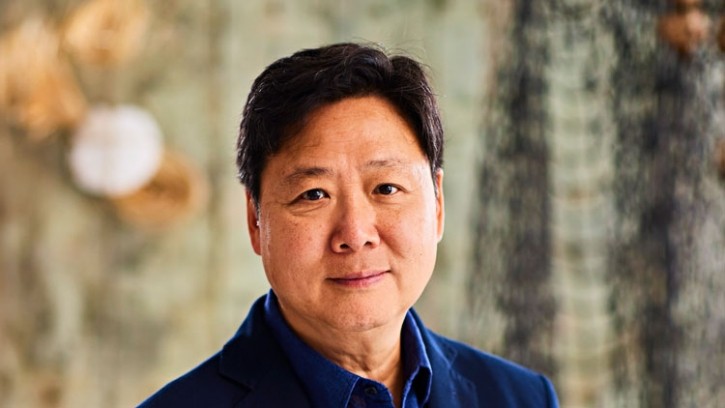
David Yeo remembers the conversation he had with his mother nearly 25 years ago when he told her he had decided to quit his job as a high-flying lawyer and go into the restaurant business. Born in Singapore, Yeo studied law at Cambridge and went on to work at law firm Freshfields in the City of London before his somewhat dramatic change of career choice.
“My mother was tearing her hair out,” he recalls. “She told me that she and my father had saved every penny they had to put me through university and that I was giving all of that up and being a partner in a top law firm to clean tables. She said to me: ‘who needs another restaurant?’”
It was this remark that has seemingly stuck with Yeo ever since. “I said to her, firstly mum we all need to eat, there can never be too many restaurants,” says Yeo of the conversation. “And secondly, you have to try my restaurant.
“My mother said after my 10th restaurant - ‘you got lucky’. Chinese mothers are like Jewish mothers, you can’t extract a compliment out of them.”
A global restaurant business
That first restaurant was Aqua on Hollywood Road in Hong Kong that opened in August 2000, and which set Yeo on an upward trajectory that is yet to hit its curve. Whether luck had any part to play in its success is moot, but by restaurant number 10 Yeo’s skill as a restaurateur has proven to be based more on judgement and passion than good fortune, despite what his mother might believe.
Today, Aqua Restaurant Group operates restaurants in Hong Kong, London, New York, Miami and Dubai with brands that include northern Chinese restaurant Hutong, Italian restaurant Cantina, Dim Sum Library, and Japanese restaurant Shiro. The company made its London debut back in 2013 in style with the opening of Aqua Shard and Hutong at The Shard on the 31st and 33rd floors of the 72-storey tower and has since followed up in the capital with Aqua Kyoto and Aqua Nuevo on Regent Street and Shiro in the City.
It is the opening of his latest two restaurants, ‘Italian dining bakery’ Luci in Covent Garden and the more upscale Azzurra in Chelsea, that is the reason Yeo is discussing his business. Launched in quick succession in July and November respectively, the restaurants represent a new stage in the company’s London operations with its first Italian offer in the city as well as its most casual concept.
Made in Chelsea
With Azzurra, Yeo has made the move westwards into Chelsea, although he doesn’t see the location in that geography. “I consider Chelsea very much part of central London,” he says when asked about the reason to head west. “London has really expanded - everything in Zone One is central London.”
It was the site, rather than the location, that turned out to be the biggest draw. At 5,000sq ft the space has enabled Yeo to create a dining room of 3,500sq ft, fitting into his ethos of creating large, destination restaurants.
“I get shown a lot of places and just walk in and out but some places you go in and if I like it, I will see the restaurant in my head,” Yeo says of the site. “I design the layout from the minute I walk in.
“Despite the affluence of the area you’d really be hard pressed to find really spacious restaurants there. I like big spaces; I’ve gone away from the smaller places we used to operate because it takes as much effort to run a small place [as a large one]. These days, it’s easier to hire staff when you have a big space. The younger generation of waiters are drawn to bigger places so it’s really an operational efficiency for us.”
Yeo describes his restaurants as being destination venues, and not places people would just walk past, which is how he also justifies the Chelsea site as well as the decision to open Hutong 33 floors up.
“We have always been pre booked; people know about us. I expect the catchment [for Azzurra] will not be about the locals saying ‘I fancy having pasta tonight, let’s drop in’ - but will hopefully attract lots of people from Mayfair and give them a reason to come to Chelsea. If you look at The Shard, people think we’re a tourist trap but 95% of our customers are from the UK.”
A Sicilian seafood restaurant
Inspired by the cuisine of Sicily and the Amalfi Coast, Azzurra is a seafood restaurant that is a culmination of Yeo’s extensive travel through Italy over many years. Instead of being farm to table, Yeo describes it as being a boat to the table restaurant, the idea coming about during lockdown when he says friends were getting fish delivered to their doors from fishermen suddenly locked out of supplying France and wider Europe.
He spent the next few months forming relationships with suppliers who were passionate about sustainability, with Azzurra’s mussels and sardines sourced from Cornwall and other seafood coming in from Scotland. Not everything comes from British waters - the Mediterranean supplies octopus with gambero rosso from Sicily and tuna and swordfish from further afield - but as much as possible is.
“My restaurants are my children,
each one of them has its own personality"
Azzurra may be very different in cuisine from the dim sum and noodle-based dishes of Hutong or the Spanish dishes of Aqua Nueva, but the philosophy is the same. Menu items include crudo such as langoustine with Amalfi lemon oil; seabass with Sardinian mullet bottarga; and scallop with compressed watermelon; seafood platters; and pasta dishes such as spaghetti with sardines; and ravioli with smoked scarmoza. Mains, meanwhile, include swordfish Milanese; grilled Dover sole; and a grilled 1kg Italian Marango beef T-bone for those eschewing seafood.
“There’s no special reason for any of my restaurants,” says Yeo. “I started the business 23 years ago with the absolute focus on produce, and it could be in Hong Kong getting market fresh veg from local suppliers or here in England. My second philosophy is if you’re using the best produce don’t smother it, let it breathe, and Azzurra is a continuation of that.
“We don’t go for the latest this or that; we offer a very humble service, food as best as we can prepare in a way that showcases the produce and serves it unobtrusively and efficiently.”
Luci, by contrast, is part of what Yeo describes as the group’s ‘second tier’ of restaurants in which Dumplings Library and Shiro also sit. Or, as he eloquently puts it: “In fashion terms we’re like H&M Group. Luci is H&M and then Azzurra is Cos or Other Stories (also owned by H&M), which is the higher end. Or Giorgio Armani and Emporio Armani; it’s the same cut and attention to detail but maybe a second cut of the fish if you like.”
Described as an Italian dining bakery, Luci combines a counter-service café downstairs with a full-service but still casual restaurant upstairs. On the ground floor menu items include large slices of pizza, gelato, and generously filled paninis that start at £3 and in some cases undercut the likes of Pret A Manger, although Yeo doesn’t consider the sandwich chain a competitor. “It’s not a Pret market, it’s much wider than that,” he insists. “It’s got serious pastries. We make our own sourdough and focaccia on site; we have wood fired pizza and a homemade gelato counter.”
Upstairs, dishes are only marginally more expensive, with most pasta dishes priced around £12 and Neapolitan pizzas from £11, although some of the antipasti and main course dishes are priced more in-line with other premium Italian ventures.
A bespoke approach to restaurants
Azzurra and Luci are not Yeo’s first Italian restaurants and follow Vista and Cantina restaurants in Hong Kong. Has he taken learnings from those restaurants or from any others in his portfolio?
“My restaurants are my children, and each one of them has its own personality. Each location and each country has their challenges so you have to start off with why you are opening a restaurant there. We only open one if we have got something to say about the food and serve a particular area.”
Hutong in New York has a very different clientele and mindset compared to Dubai, Hong Kong, and Miami, he says. “It’s the same with Italian restaurants. Azzurra will be very different from Cantina or Vista - first and foremost its focus is solely on seafood.”
“Sometimes customers in the area tell us how they like to eat and how they want to be served and it’s for us to adapt accordingly. We start with an idea but in the end we’re a service industry so we’re there to share. We will not be led by them, but we are happy to meld the experience.”
“We treat ourselves very much like fashion
designers - we tell you what you should try next season"
The same goes for other restaurants in his sphere and beyond. “I love learning from other people and seeing what they are creating and celebrating. It helps us to develop our own style. We all like to think we are super original but we’re not really. At the end of the day, we do take on influences from various people and places.”
With Hutong, for example, The Shard was a similar building to the one that housed the Hong Kong restaurant, but in New York it was very different. Hutong New York pays homage to the city itself, which Yeo says is the art deco capital of the world in a similar way that Shanghai in its heyday was the art deco capital of Asia.
The menus also differ from country to country. Yeo says he makes sure that 30-40% of the menu comprises signature dishes but that the rest are unique to each site - “you won’t get the experience of eating in Hutong New York anywhere else in the world”.
Global challenges
As every UK-based restaurateur knows, the challenges thrown up first by Brexit, then Covid and then the cost-of-living crisis, twinned with spiralling inflation, have been manifold. What does the current climate mean for a restaurateur operating across several different continents, each with their specific problems?
“A common challenge globally after Covid is a lot of people have left the hospitality industry and it is very hard to recruit experienced front of house staff quickly and train them up,” Yeo admits. “It’s been a real challenge in London because in the past a lot of people who worked in restaurant came from Europe.”
He believes the economic climate in London is holding up well. “London is different to rest of the UK - the London market stands out on its own. There are a lot of people with disposable incomes, and a lot of youngsters with money who are willing to spend it. God knows where it’s coming from - maybe they were saving to buy their own place but believe now’s not the right time.
“It’s not just in hospitality but in fashion. The younger generation seems to be saying ‘we’ll spend what we have now rather than save’. I’m not finding it that difficult in London.”
He compares the Middle East and Dubai to London but says New York is a different story. “The working from home thing is probably the worst in New York of all the international cities - people work a three-day week in the office. On Fridays in midtown not a single office is open, and on Mondays as well. So, it’s Tuesday, Wednesday, Thursday and by midday Thursday everyone starts going home, so it’s a really only a two and a half day trading week. It’s slowly coming back but it’s tough.”
Expansion plans
Challenges stateside might be a reason that when Yeo talks about expansion it is within Europe that he has set his sights. Luci has been created very much as a roll out brand and will be the first of many to come in the capital and beyond. “Covent Garden is the flagship, but this is a multiple concept,” he says, adding that the plan is to open about four or five in London in the coming years.
“Luci is a very easy concept; you can go in at any time of the day. It would be fantastic for somewhere like Bicester Village and other high-traffic areas.”
There is also an ambition to open a Dim Sum Library in London to try and replicate its success in Hong Kong. “Hong Kong is the dim sum capital of the world so to actually succeed in dim sum is a very rare feat - it’s like being the best pizza maker in Italy and being recognised so, and that’s what we’ve done in Hong Kong.”
Yeo believes Dim Sum Library has great potential in London, even if Londoners might not know it yet. “We treat ourselves very much like fashion designers - we tell you what you should try next season. If we serve you what you want to eat, you’ll be eating steaks all the time, so we go in and say, ‘this is interesting’. It’s not about dictating; it’s like a musician can’t play you the tune you want to hear but wants to play something new.
“In fashion terms we’re like H&M Group.
Luci is H&M and then Azzurra is Cos"
“London remains one of the most exciting cities in the world to open. It is home to lots of lots of people in the industry and chefs that I respect. It’s wonderful being part of this community here.”
Beyond London, Yeo once again turns to another luxury industry to draw a comparison. “A lot to do what we’ve set ourselves up to do comes from looking at a perfume bottle and seeing the words London, New York, Paris, Milan, and that’s where we still have a long way to go. We hope to be in Paris soon and then we are looking at Milan and Germany. The one I am looking forward to next and learning a lot from is Paris; we have a style of dining that they will like.”
Yeo won’t reveal what restaurant he is bringing to Paris other than that it will be an iteration of one of its flagship brands rather than a new concept.
As Yeo approaches his quarter century as a restaurateur, he is showing no signs of slowing down. There’s more in the tank for a man who in many ways has only just got started. The answer to his mother’s question of who needs another restaurant is simple: David Yeo.

